This Blu-ray is currently available from Arrow Academy (www.arrowvideo.com – www.facebook.com/ArrowVideo/).
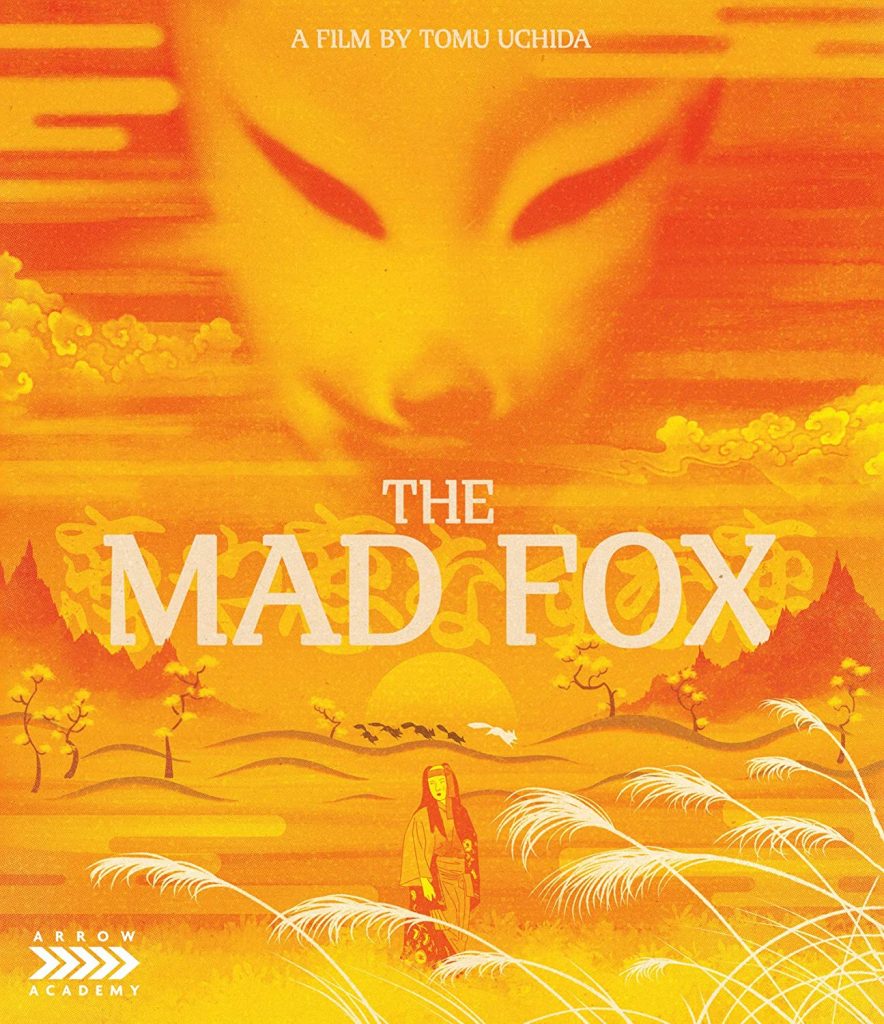
While Arrow Video is constantly putting out impressive Blu-rays of out-of-print genre fare, their arthouse division, Arrow Academy, is no less remarkable. They have gone to great lengths locating and remastering films from around the world. Recently, they debuted the surreal a Blu-ray of the Japanese fantasy The Mad Fox (1962) aka Love, Thy Name Be Sorrow, a feature that was nominated for the Golden Lion at the Venice Film Festival. Amazingly, this impressive Blu-ray marks the first time it has been made available in this part of the world. Created by award-winning director Tomu Uchida (Tsuchi, A Fugitive from the Past), it marks an interesting transition between traditional storytelling and more experimental techniques that would flourish over the following decades.
A lengthy narration opens the film, detailing how falling in love can lead to nothing by sadness. During the reign of Emperor Suzaku (930-946 A.D.), Mt. Fuji begins erupting regularly and the public note a strange white light or rainbow drifting in the sky. It’s a bad omen and the emperor’s astrologist, Yasumori, is tasked with interpreting these natural phenomena. He refers to an incredibly rare text known as The Golden Crow, which explains the secrets of Yin and Yang. Yasumori has two adopted disciples who will take over his position once he passes away. The first, Yasuna, is honorable, kind and in love with his master’s adopted daughter. The second figure, the power-mad Doman, plots with Yasumori’s wife to take control as the new royal astrologer. Horrible events follow involving murder and violent retribution. Yasuna is driven mad by loss and before life takes even more fantastic and unfortunate turns.
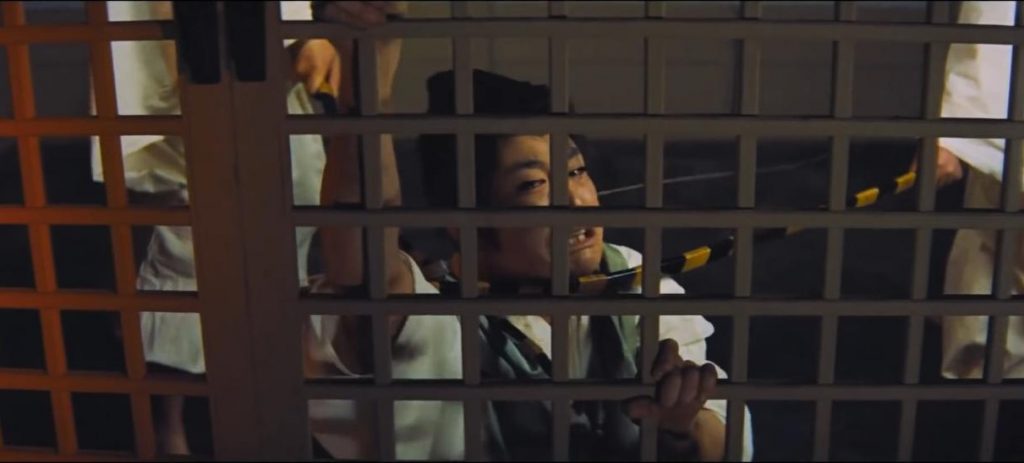
Initially, the movie feels like a fairly traditional cinematic drama involving a sinister power play and a tortured hero seeking vengeance while dealing with personal loss. However, things change fairly quickly. Truth be told, it’s unexpectedly violent early on as the villainous characters torture the protagonists. The acts are all presented in a very icy and blunt manner.
From the halfway point forward, as Yasuna’s madness takes hold, events take a decidedly more surreal turn like something out of a fairy tale. The backdrops look less like traditional palaces and become more akin to a colorful theater stage. As for the plot, we learn that shapeshifting wolves roam the land that these beings sometimes move in the company of humans (the performers wear wolf masks after transforming back to their animal form). Of course, the story of the wolves is no less unfortunate, as they undergo pain and suffering at the hands of humans.
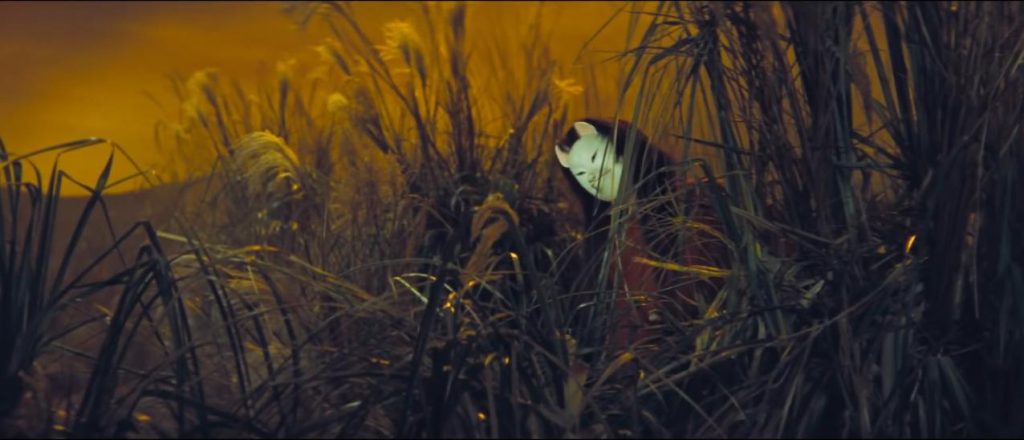
It takes some time to get on the movie’s wavelength and adapt to the cultural quirks and the sudden appearance of supernatural elements. Yet even if it requires a bit of time to understand the film’s unique subtleties, one eventually will come to conclusions about the concepts being addressed. And even if one simply shuts the brain off, this is a trippy, gorgeously shot feature with impressive widescreen photography. It’s a movie that includes an incredibly bold color palette, numerous high angle images, animated characters and large sets on various soundstages that swing and swivel past a stationary camera. This is quite unlike anything else made during its era.
As for meanings, if some of the translated dialogue is to be taken quite literally, falling for someone brings out the worst in people and can even lead to horrible acts and death. The final line literally states that one should never fall in love, because it can only lead to emptiness. However, from this viewer’s perspective the filmmaker likely realize that this is impossible advice to follow, and that perhaps viewers should simply come to realization that tragedy and loss are an inevitable part of life and love.
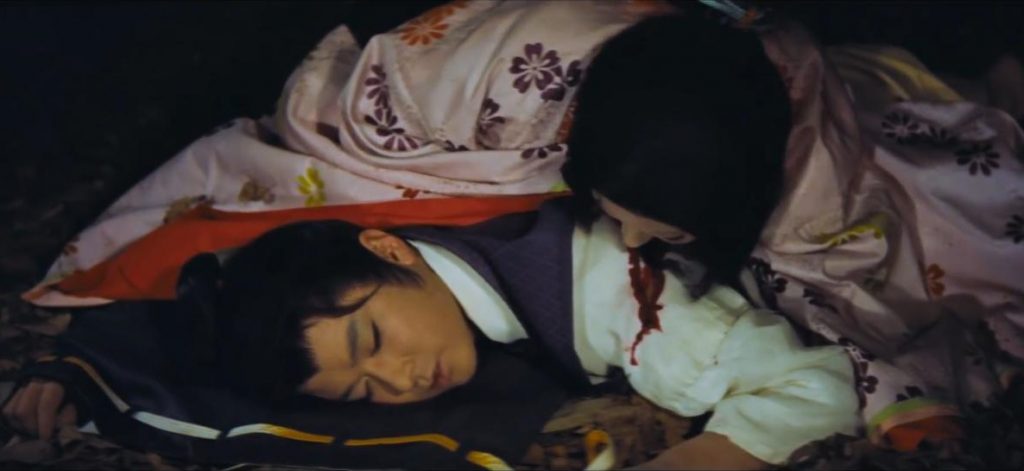
It sounds a little bleak, but the movie plays more like a sumptuously shot intellectual exercise than a soul-crushing emotional journey. And the spinning yellow flower field sets and carefully constructed shacks are all incredible to look at, even if what is going on within them is downbeat.
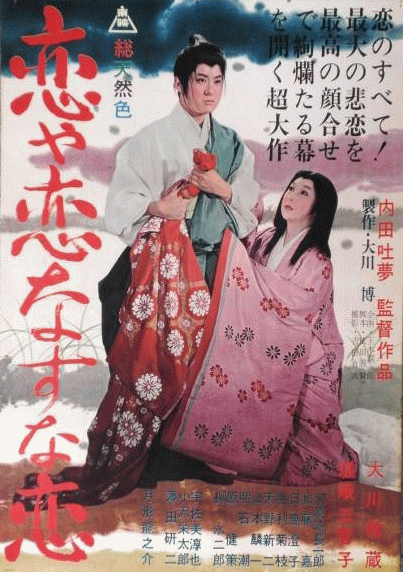
Visually, this is a fascinating and completely unique movie that should appeal to fans of world cinema or with an eye for photography. It also comes with a new restoration. While the image quality isn’t crystal clear, there won’t be any complaints about picture quality. It doesn’t exactly look like a brand-new movie, but the picture and framing still pops in several sequences and makes a great impression. Given the various experimental effects that were used to create the final product and print, it’s highly unlikely that the movie could look any better than it does here. The Blu-ray also includes a trailer and an image gallery with photos from the production.
The biggest bonus here is the commentary track by a Japanese cinema expert. He provides a great deal of background information about the filmmaker and cast, while also helping to explain how the movie contrasts with others during this cinematic period. He remarks that the film is decidedly less like earlier works from Uchida, moving away from most popular themes (samurai flicks were big at this time) and instead focusing on a bolder and more personal approach to filmmaking. Admittedly, it can be a little dry when the speaker lists off all of the cast and crew members and details their various credits, but there is some valuable and illuminating information contained within the track.
In the end, it is truly wonderful that Arrow are continuing to rescue unique and unseen material like The Mad Fox. Those curious about Japanese cinema history will see this title mix old-fashioned and new movie techniques in order to create a completely new movie experience. Like the title suggests, this film may be a bit insane, but is a slickly produced and compelling ride.


